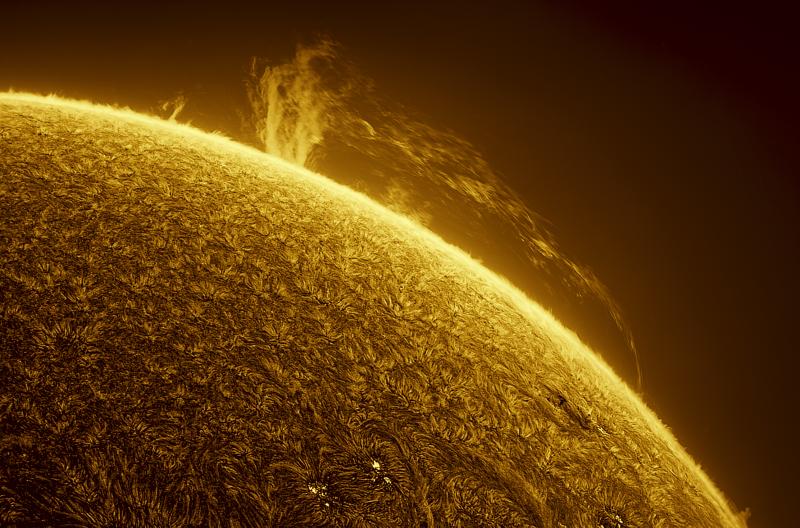
2025's skies will feature a range of exciting sights, from partial solar and total lunar eclipses to illuminated planets, meteor showers, supermoons and more. Explore the year’s space and astronomy highlights with astronomers from the Royal Observatory Greenwich.
For more in-depth guides to each month's highlights throughout 2025, bookmark the monthly astronomy highlights blog or get yourself a copy of the 2025 guide to the night sky.
In 2025 the Royal Observatory will celebrate its 350th anniversary. Join us on-site and online for a series of events, including astronomy live streams, stargazing demos, author talks and family activities.
Written by Jake Foster and Imo Bell.
January

1 - 12 January - See the Quadrantid meteor shower
The year starts with a bang with the Quadrantids, one of the strongest and most reliable yearly meteor showers. Active from 28 December 2024 until 12 January 2025, this shower is famous for its ‘fireballs’, exceptionally bright meteors.
In 2025 the Quadrantids peak on the night of 4 January, with a possible rate of up to 120 meteors per hour at the maximum. The waxing crescent Moon might drown out a few of the fainter meteors on this night, though luckily it will set below the horizon just before 10 pm from the UK.
To see this shower bundle up nice and warm, find a dark location free from light pollution, and fill your eyesight with as much of the sky as possible. To work out if you’ve seen a Quadrantid meteor trace it back to its radiant point, which should be in the northern part of the constellation Boötes.

4 January - See Saturn hide behind the Moon
An occultation in astronomy occurs when, from our vantage point on Earth, one celestial object appears to pass in front of another.
On 4 January from the UK we’ll see a lunar occultation of Saturn, meaning Saturn will appear to pass behind the Moon, which will be nearing its first quarter phase.
At around 5.15 pm Saturn will be visible just about touching the northwest of the Moon, and will then disappear behind the shadowed portion of the Moon. Around 6.30 pm Saturn will reappear from behind the southeast of the lunar disk.
Other regions won’t see an occultation, but Saturn and the Moon will appear close to each other in the sky, known as a conjunction.

10 January – Venus at greatest elongation east
Venus and Mercury are bright enough to be seen with the unaided eye, but because they're closer to the Sun than Earth is, they rarely get far from it in the sky. This makes them difficult or even dangerous to see at times. This is especially true for Mercury, which is smaller, fainter and closer to the Sun than Venus.
If you’d like to see these rocky worlds for yourself, your best bet is usually to wait for their greatest elongation. This is the time when each planet is farthest from the Sun, and therefore more likely to still be above the horizon when the blinding Sun has set.
Venus will reach its greatest elongation east (and therefore seen in the evening) on 10 January, and its greatest elongation west (seen in the morning) on 1 June 2025.

16 January - Mars at its brightest
When a planet is ‘at opposition’ it’s directly opposite to the Sun in the sky, which fully illuminates the planet’s face so that it appears at its brightest.
On 16 January Mars will be at opposition, making this a great opportunity to set your eyes or telescopes on the beautiful red planet.
February

Late January and most of February – A gathering of planets
If you’re a fan of gazing at the planets, set a reminder for after sunset on any evening from late January into late February, where you’ll have a great view of six planets - Saturn, Venus, Neptune, Uranus, Jupiter and Mars - scattered across the sky in the hours after sunset. Between 18 and 21 January will be particularly good, as Saturn and Venus will be close to one another in the sky, slowly swapping places in the planetary parade.
Saturn, Venus and Jupiter will be easily visible as bright white points of light, and Mars as an orange dot, but Uranus is quite faint and will require very dark skies or a telescope to attempt to see it. Neptune meanwhile will require a fairly powerful telescope to observe. In late February, Mercury will also join the parade, creating a total of seven planets on display in the sky. However, by this point it will be much more difficult to see Saturn and Neptune as they will be very low on the southwestern horizon after sunset.

Search for another galaxy
February kicks off what is known as ‘galaxy season’ for the Northern Hemisphere, where we have the best opportunity to look at these stunning distant ‘cities’ of gases, dust and stars.
A new Moon on February 28 February gives you a chance to escape the light pollution of the Moon and get a good look at some galaxies.
An ever-popular astronomy and astrophotography target is the Andromeda Galaxy, one of our closest galactic neighbours at around 2.5 million light years away. You’ll find it near the Andromeda and Cassiopeia constellations. For the best chance of observing it, get somewhere reasonably dark to look with a telescope, or especially dark to see it with a small pair of binoculars. Under very dark, clear skies you can sometimes even make it out as a small smudge with the naked eye!
March

8 March - Mercury at greatest elongation
Mercury will reach its greatest elongation east, its farthest point from the Sun, for the first time in 2025 on 8 March. As it’s an eastern elongation this will be best seen in the evening.
Mercury's greatest elongation east will happen again on 4 July and 29 October, and it will reach its greatest elongation west (best seen in the morning) on 21 April, 19 August and 7 December 2025.
As with any observation close to the Sun, make sure you don’t look directly at the Sun and, if observing with a telescope or pair of binoculars, wait until after sunset or before sunrise to avoid accidentally pointing them at it.

14 March – Partial lunar eclipse from the UK
A lunar eclipse occurs when the Moon moves into the Earth’s shadow, either fully or partially.
While parts of Europe, the Americas, Russia and Africa will see a total lunar eclipse on this day, from the UK we’ll see a partial lunar eclipse, where not all of the Moon will be in shadow.
During this particular eclipse almost all of the Moon will be in Earth's umbra, the darker part of its shadow. The Moon will first move into Earth's penumbra (the lighter part of its shadow) at 3.57 am GMT. The maximum of the eclipse in London will be at 6.19 am, because during the eclipse's actual maximum at 6.58, the Moon will have set below the horizon.
Getting to a high point with a clear western view will allow you to see more of this eclipse. Though, due to its unsociable timing, we’d forgive you for sleeping through this one.

20 March – The vernal (spring) equinox
Changes in the length of day and night are caused by the tilt of the Earth. When the Earth orbits the Sun, at certain times of year the Northern Hemisphere is tilted towards the Sun and the Southern Hemisphere is tilted away from it. For the other half of the year, the reverse happens.
Equinoxes happen when neither hemisphere is tilted towards or away from the Sun and there are roughly equal hours of daylight and darkness. Solstices, on the other hand, happen when a specific hemisphere is tilted towards or away from the Sun, which results in long days or long nights.
The vernal or spring equinox will occur on 20 March in the Northern Hemisphere, and this is when astronomical spring is said to start.

23 March – Saturn’s rings “disappear”
Saturn gained the nickname “the jewel of the Solar System” thanks to its magnificent system of rings. On 23 March, however, the iconic rings are set to disappear. This is due to the Earth’s orbit crossing the plane of the rings, a rare event that occurs about once every 15 years. In other words, the flat disk of the rings will be edge-on from our perspective.
Galileo was the first to notice the rings disappear from view during a plane crossing in 1612. At the time, it was proposed that the rings were in fact moons of Saturn, leading Galileo to wonder whether “Saturn swallowed his children".
Subsequently, plane crossings have been very useful to astronomers in revealing Saturn's secrets. Things that would otherwise be obscured can be spotted when the rings are edge-on - several of Saturn’s moons have been discovered this way!
On 23 March Saturn will be very close to the Sun in the sky, meaning we sadly won’t be able to see the planet during the plane crossing. Despite this, it’s pretty cool to know that our planet will be perfectly aligned with the iconic rings of Saturn.
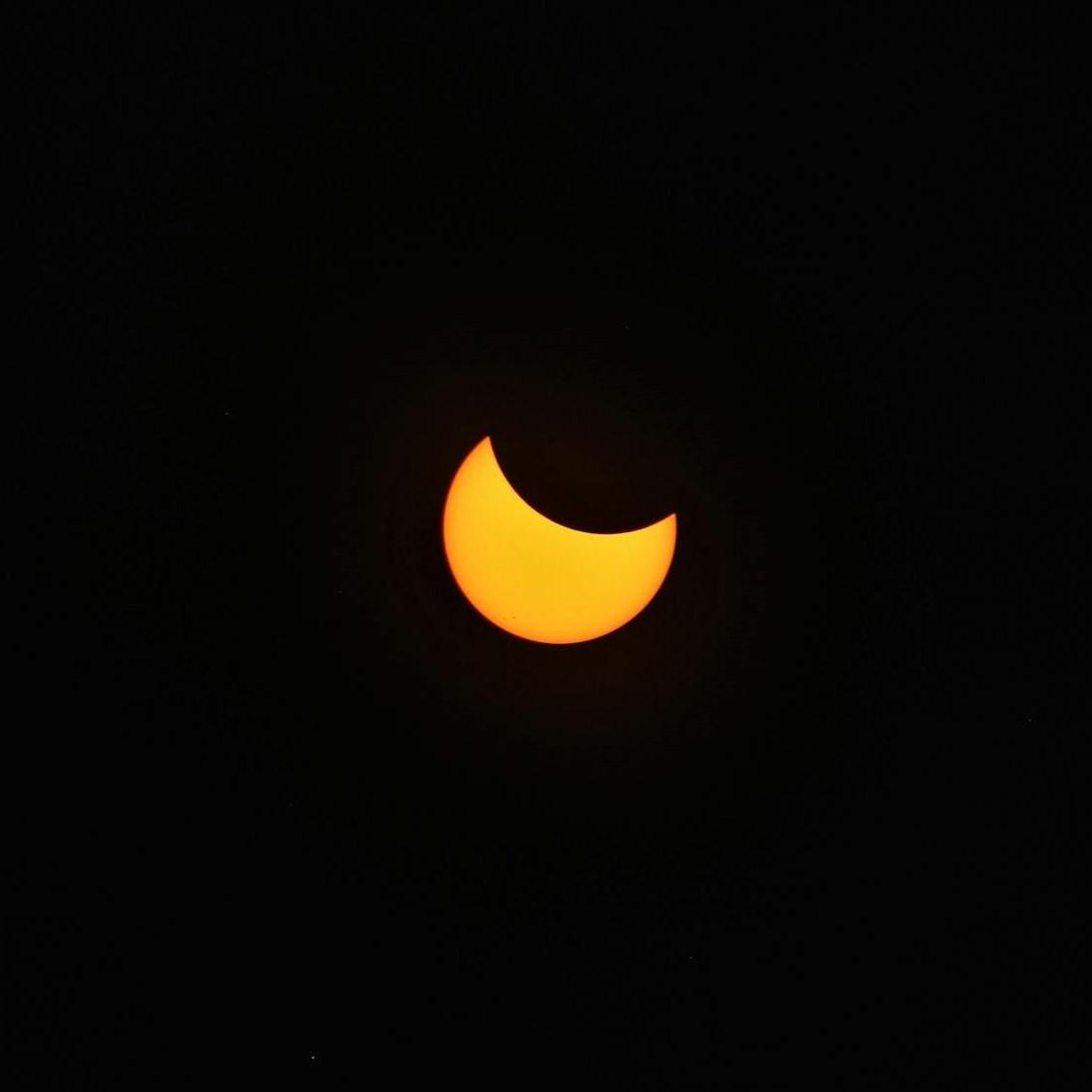
29 March – Partial solar eclipse from the UK
Rounding out March is a partial solar eclipse, where around 30-40% of the Sun will be obscured by the Moon at the maximum.
The partial eclipse will begin at 10.07 am GMT in London when the Moon first touches the edge of the Sun. Maximum coverage where the most of the Sun is obscured is at 11.03 am, and then the Moon will gradually move off the solar surface until the eclipse ends at 12 pm.
Here at the Royal Observatory we’ll be live streaming the eclipse - sign up to our space newsletter to be kept up to date about the stream.
April

16 - 25 April - Look out for the Lyrid meteor shower
In 2025 the Lyrid meteor shower will be visible from 16-25 April, peaking on 22 April.
Although it's far from one of the most active yearly meteor showers, the Lyrids can still dazzle - some meteors have bright dust trails that glow in the sky for several seconds.
What’s more, on the peak on the night of 22 and morning of 23 April the Moon will be below the horizon until around 4 am BST, so won't cause light pollution, making conditions ideal to observe the peak.
The Lyrids are caused by debris from Comet C/1861 G1 Thatcher, which does a lap of the Sun once every 415 years. It’s the oldest recorded meteor shower still visible today, and was first recorded in 687 BCE.
Never miss a shooting star
Sign up to our space newsletter for exclusive astronomy highlights, night sky guides and out-of-this-world events.
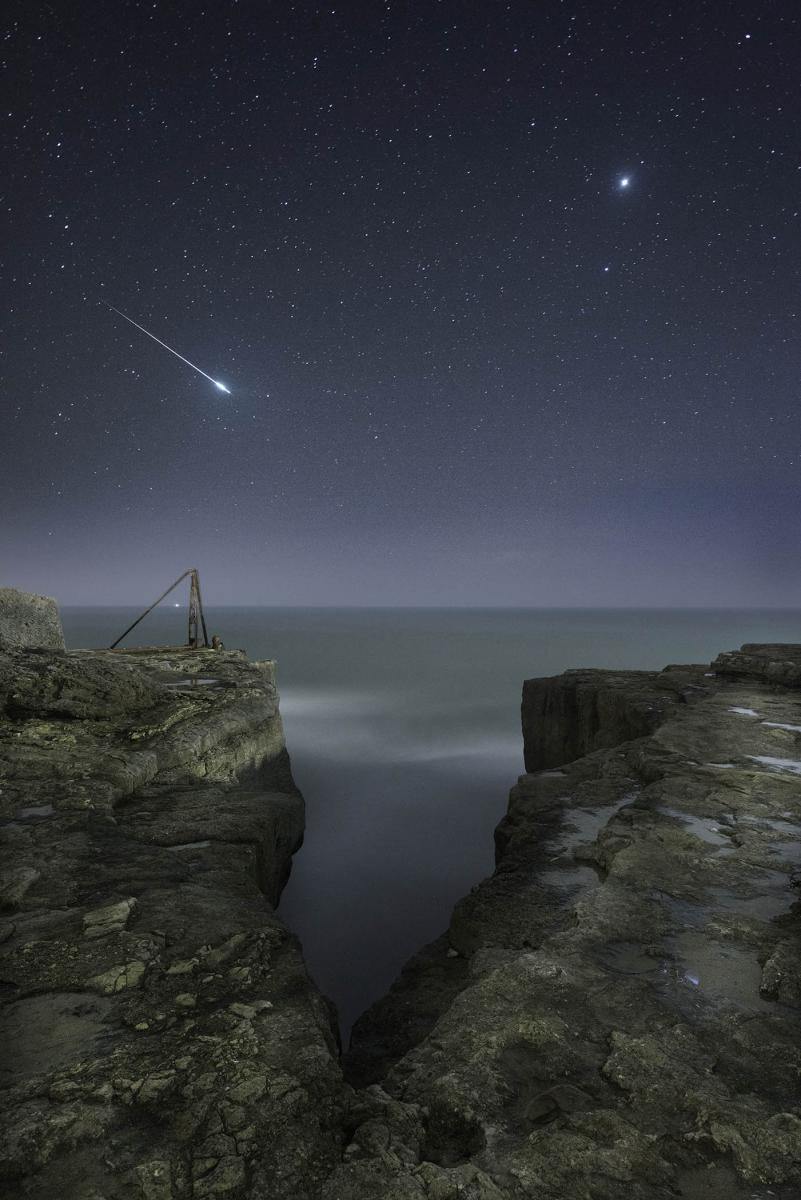
May
19 April – 28 May - The Eta Aquariid meteor shower
The Eta Aquariid meteor shower is active between 19 April and 28 May, peaking between midnight and dawn on 5 May with a predicted rate of up to 40 meteors per hour.
This shower is more visible for the Southern Hemisphere and will appear low in the sky in the Northern Hemisphere in the early hours pre-dawn. Nevertheless, it should still be possible to see the shower in the eastern sky even when the radiant is below the horizon.
In 2025 the Eta Aquariids begin when the Moon is in its waxing gibbous phase, with maximum on May 5 happening one day after a first quarter moon, resulting in slightly unfavourable seeing conditions.
Look eastwards to spot the star Eta Aquariid in the constellation of Aquarius, after which the meteor shower is named. The source of the meteor shower is the famous Halley’s Comet, which is visible from Earth about every 75-76 years.

June
21 June – The summer solstice
The Northern Hemisphere will mark the summer solstice on 21 June, the ‘longest day of the year’, when there will be around 16.5 hours of daylight.
The exact moment of the solstice is at 3.42 am BST, which is the point at which the Northern Hemisphere is tilted farthest towards the Sun. From here on out the days will get progressively shorter until the winter solstice on 21 December.

22 June – 350 years since King Charles II founded the Royal Observatory
In June 1675, King Charles II founded the Royal Observatory Greenwich.
John Flamsteed's task as the first Astronomer Royal was to observe and record the positions of the stars in order to “find out the so-much-desired longitude of places".
This search for a way to measure longitude – a person's position east or west - led to the world's first Prime Meridian, laying the foundations for Greenwich Mean Time and the global time system we still use today.
Learn more about the history of the Royal Observatory
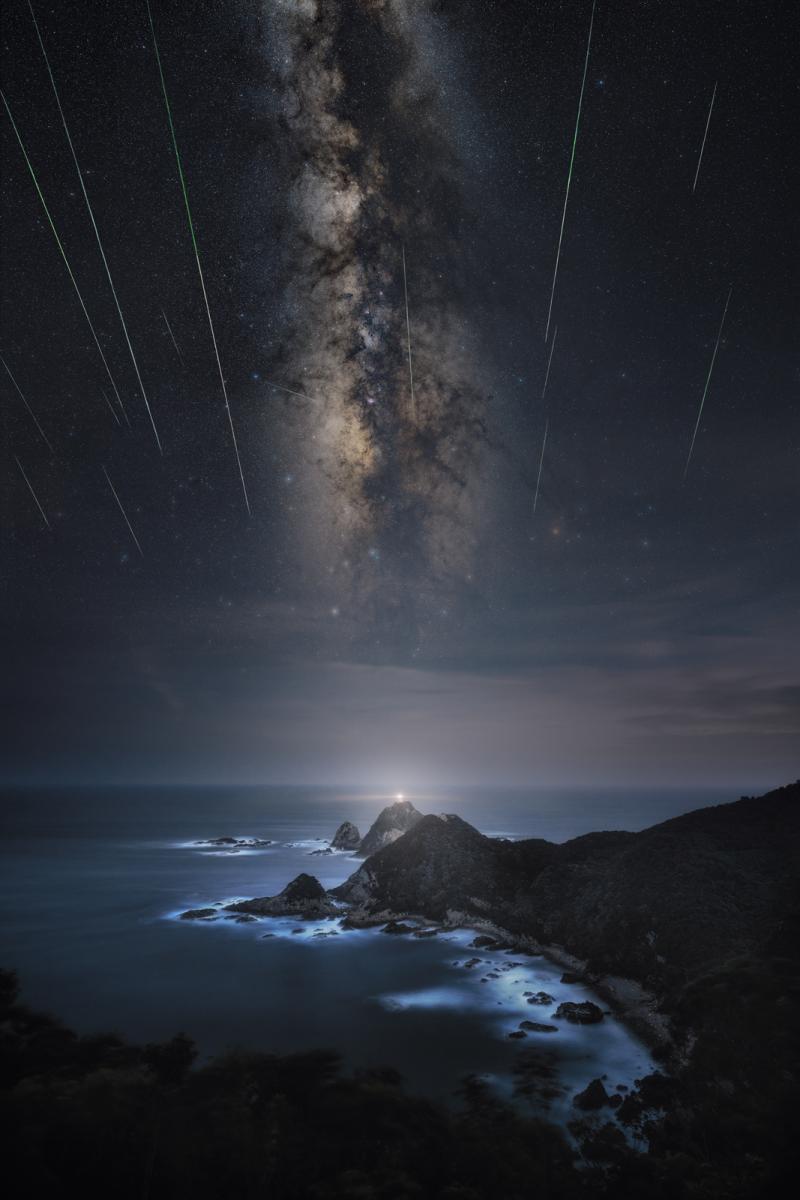
July and August
17 July – 24 August - The Perseid meteor shower
In July and August the Perseid meteor shower will occur, a highlight of many astronomers’ calendars due to its high hourly rate and bright meteors. At the peak you could see up to 150 meteors per hour, and you might even catch some fireballs too.
In 2025 the Perseid meteor shower is active between 17 July and 24 August, with the shower peaking on 12 August. This year, sadly, the maximum of the shower falls three days after the full Moon, so viewing conditions won’t be optimal. However, the long duration of this shower means you have plenty of darker opportunities to see some Perseid meteors, like around the new moons on 24 July or 23 August.
The shower will appear to radiate from the constellation of Perseus, so find a dark spot and look there for the best chance of seeing some shooting stars.
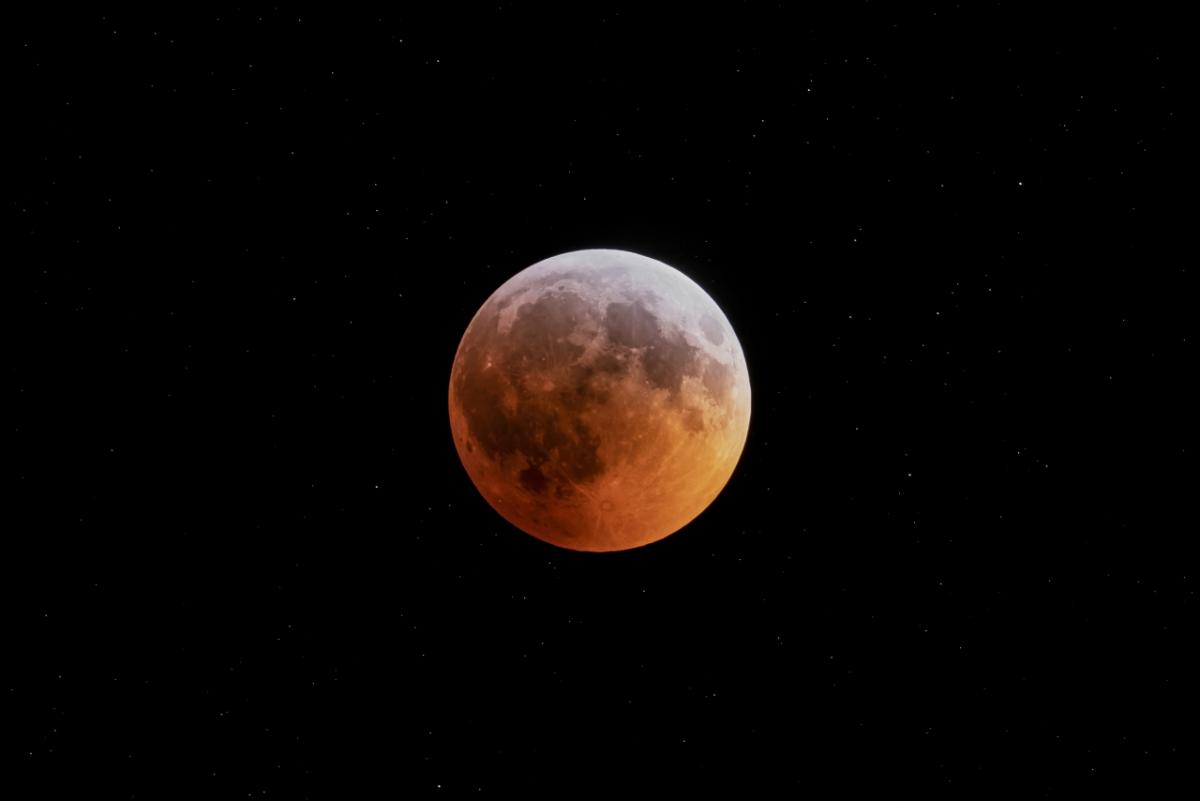
September
7 September – Total lunar eclipse
The Moon will rise above the horizon just in time for us to see this total lunar eclipse from the UK. The eclipse’s maximum will occur at 7.33 pm BST, as the eclipse's actual maximum at 7.11 pm happens when the Moon is below the horizon. The Moon will then gradually move out of Earth's shadow until 9.55 pm.
During the eclipse, the Moon will appear a red hue because it will be illuminated by light that has passed through the Earth's atmosphere and been bent back towards the Moon by refraction.
As the Moon will be low on the horizon and quite difficult to see, find a high point with a clear view to the east to see the most of this eclipse.

19 September – Lunar occultation of Venus
In September we’ll get to observe the motion of the Solar System in action as Venus takes its turn to temporarily disappear behind the Moon.
This lunar occultation will be visible from Africa, Western Russia, Canada, Asia and Europe, including London. Venus will pass behind the Moon at 12.55 pm BST, and reappear at around 2.14 pm BST.

21 September – Saturn at its best
Saturn reaches opposition on 21 September, meaning it’ll be directly opposite the Sun in the sky and therefore look especially bright to us.
As one of the more visible planets to reach opposition, this could be a good opportunity to try to capture some photos of the gas giant.

22 September - Autumnal equinox
In 2025 the autumnal equinox will occur on 22 September at 7.20 pm BST. On this day the Sun will illuminate the Northern and Southern Hemispheres equally, and day and night will be roughly the same length.
The full Moon closest to the autumnal equinox, which usually falls in September, is called the Harvest Moon. It got this name because historically the light of the Moon helped farmers work late into the night harvesting crops.
October
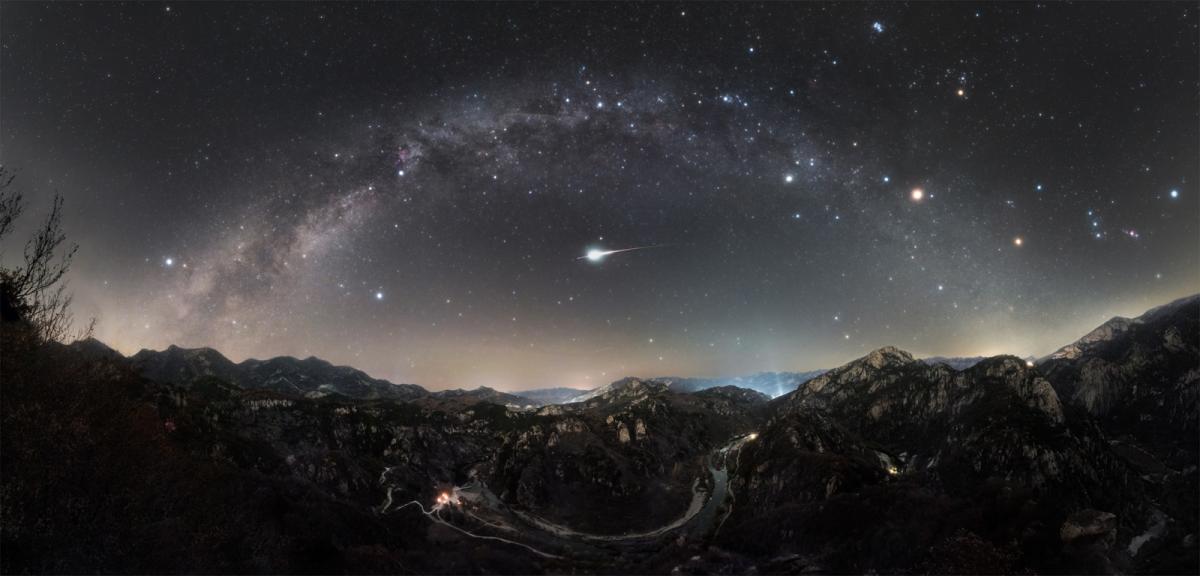
2 October – 7 November - The Orionid meteor shower
With a maximum rate of around 25 meteors per hour, the Orionid meteor shower is active from 2 October until 7 November and peaks with a broad maximum lasting about a week around 22 October.
What’s more, in 2025 the Moon will be new at the peak, meaning the skies will be nice and dark to spot some meteors.
Orionid meteors tend to be particularly fast with persistent trains. They originate from Comet 1P/Halley, famously known as Halley's Comet.
November

The Pleiades, the ‘Seven Sisters’
November is a great time to observe the Pleiades star cluster, one of the most easily recognisable asterisms (pattern of stars) to spot in the night sky during the winter.
This open star cluster sits within the constellation of Taurus the Bull and is visible with the naked eye. While you may assume there are only seven stars in the cluster, there are actually over 1,000, but only six are usually visible with the naked eye. Stargazers with sharper eyes, however, may be able to spot more members of the family.
No viewing equipment is needed to see the sisters, but taking a look with binoculars or a telescope will allow you to look closely at individual gems within the cluster.

5 November and 4 December - Supermoons
Ever looked up at the Moon and thought it looked particularly big and bright? Your eyes probably weren’t deceiving you - sometimes the Moon is closer to us in its elliptical orbit, making it look especially large.
Its closest approach to us is called perigee, and when a full Moon happens very close to perigee we call it a supermoon. At this time the full Moon will appear up to 14% bigger and 30% brighter than when it’s farthest away (apogee).
There will be two supermoons in 2025, one on 5 November and another on 4 December.
December

4 - 20 December - The Geminid meteor shower
The Geminid meteor shower, with a possible hourly rate of 150 meteors per hour, is usually one of the best meteor shower displays you can see all year.
In 2025 the Geminids will be active between 4 and 20 December and the shower reaches maximum on 14 December. In 2025 the peak happens when the Moon is a thin waxing crescent, so lunar light pollution luckily won’t be too much of a problem with this shower.
Geminid meteors are often slower than those from most other meteor showers, and so they often appear to last longer. To spot them, fill your view with the sky and wait for the lights to appear. And, given this is a midwinter wonder, don’t forget to wrap up warm!

21 December - The winter solstice
The winter solstice, the point at which the Northern Hemisphere will be tilted farthest away from the Sun, will occur on 21 December in 2025. On this day there will be slightly less than eight hours of daylight in London. Whilst many people celebrate the whole day, the exact moment of the solstice will occur at 3.03 pm GMT.

2025 guide to the night sky
What’s On
See events at the Royal Observatory.
Header image: Observations at Night © Jakob Sahner, shortlisted in Astronomy Photographer of the Year 2024


